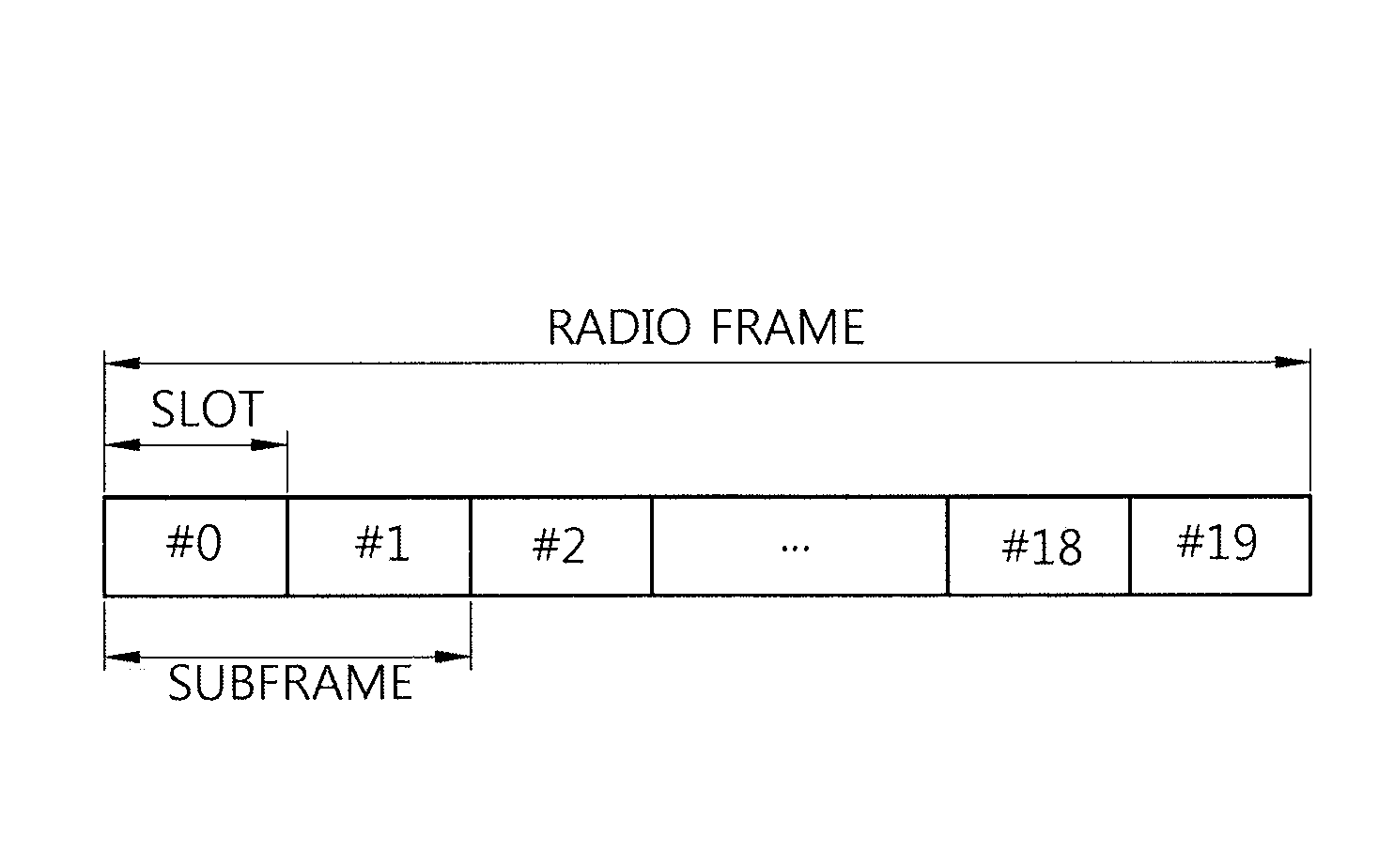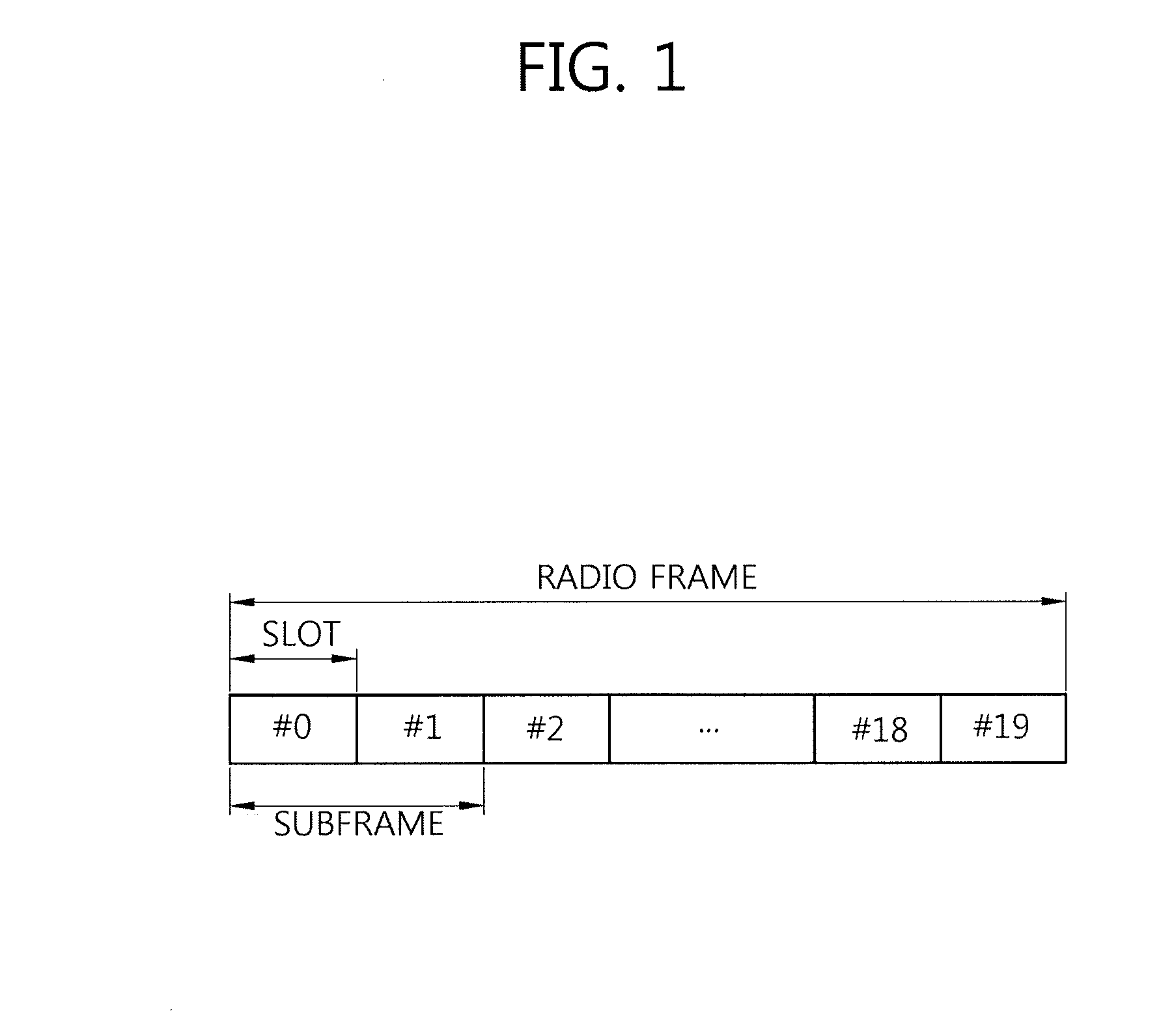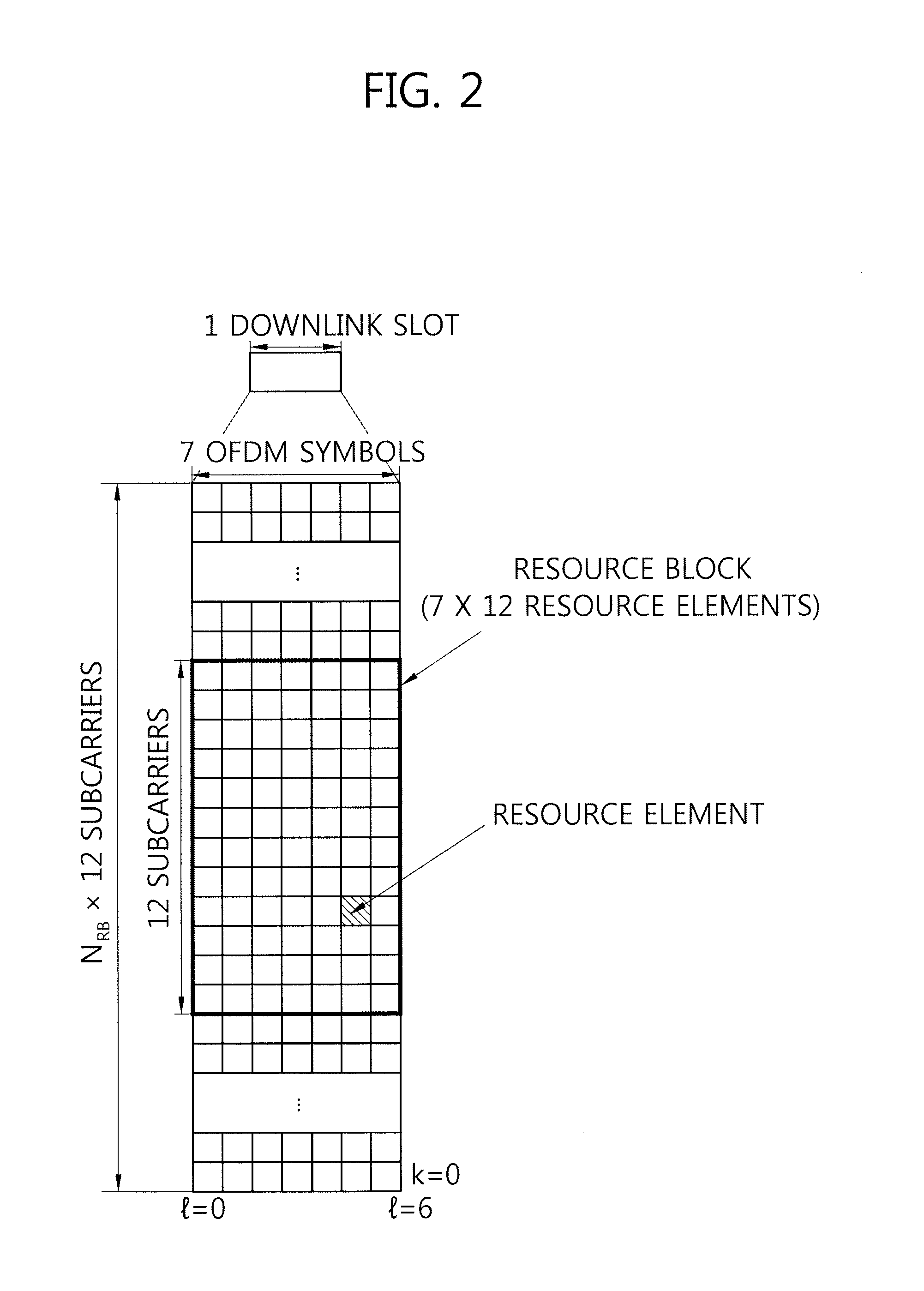Method and apparatus for allocating resources in wireless communication system
a wireless communication system and resource allocation technology, applied in the field of wireless communication, can solve the problems of inability to use the same conventional resource allocation method, and achieve the effect of efficient resource allocation
- Summary
- Abstract
- Description
- Claims
- Application Information
AI Technical Summary
Benefits of technology
Problems solved by technology
Method used
Image
Examples
Embodiment Construction
[0030]Long Term Evolution (LTE) according to the 3rd Generation Partnership Project (3GPP) standardization organization is part of Evolved-UMTS (E-UMTS) using an Evolved-Universal Terrestrial Radio Access Network (E-UTRAN), and LTE adopts Orthogonal Frequency Division Multiple Access (OFDMA) in downlink and adopts Single Carrier-Frequency Division Multiple Access (SC-FDMA) in uplink. LTE-Advanced (A) is the evolution of LTE. In order to clarify a description hereinafter, 3GPP LTE / LTE-A are chiefly described, but the technical spirit of the present invention is not limited thereto.
[0031]A wireless communication system includes at least a single Base Station (BS). Each BS provides communication service to a specific geographical area. In general, a BS refers to a fixed station that communicates with user equipment, and the BS may also be called another term, such as an evolved NodeB (eNB), a Base Transceiver System (BTS), an access point, or an Access Network (AN).
[0032]User Equipment...
PUM
 Login to View More
Login to View More Abstract
Description
Claims
Application Information
 Login to View More
Login to View More - R&D
- Intellectual Property
- Life Sciences
- Materials
- Tech Scout
- Unparalleled Data Quality
- Higher Quality Content
- 60% Fewer Hallucinations
Browse by: Latest US Patents, China's latest patents, Technical Efficacy Thesaurus, Application Domain, Technology Topic, Popular Technical Reports.
© 2025 PatSnap. All rights reserved.Legal|Privacy policy|Modern Slavery Act Transparency Statement|Sitemap|About US| Contact US: help@patsnap.com



